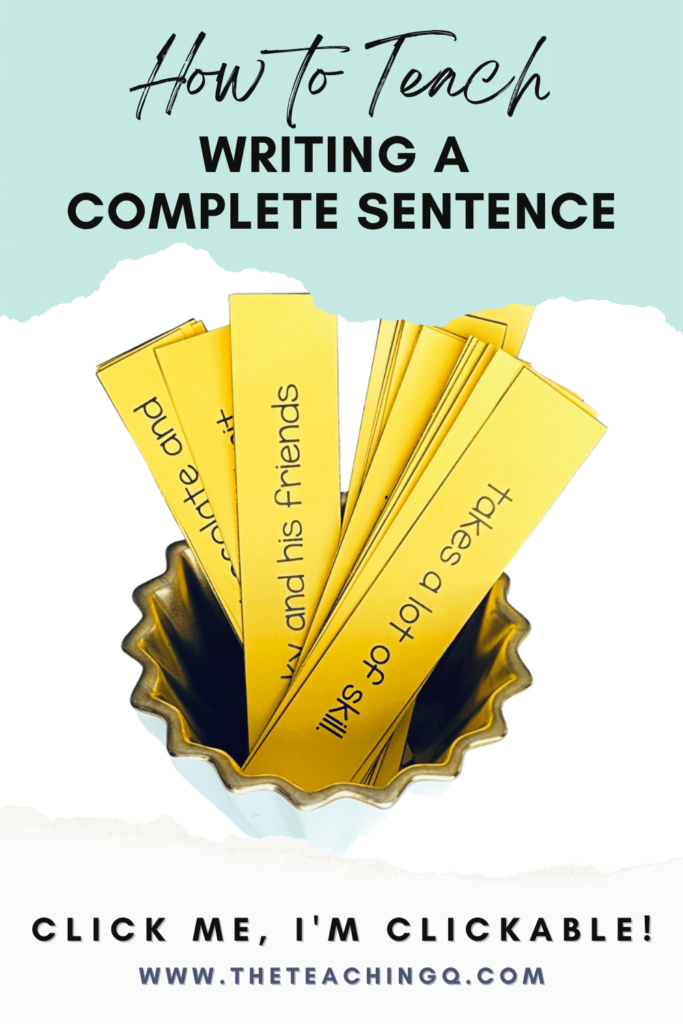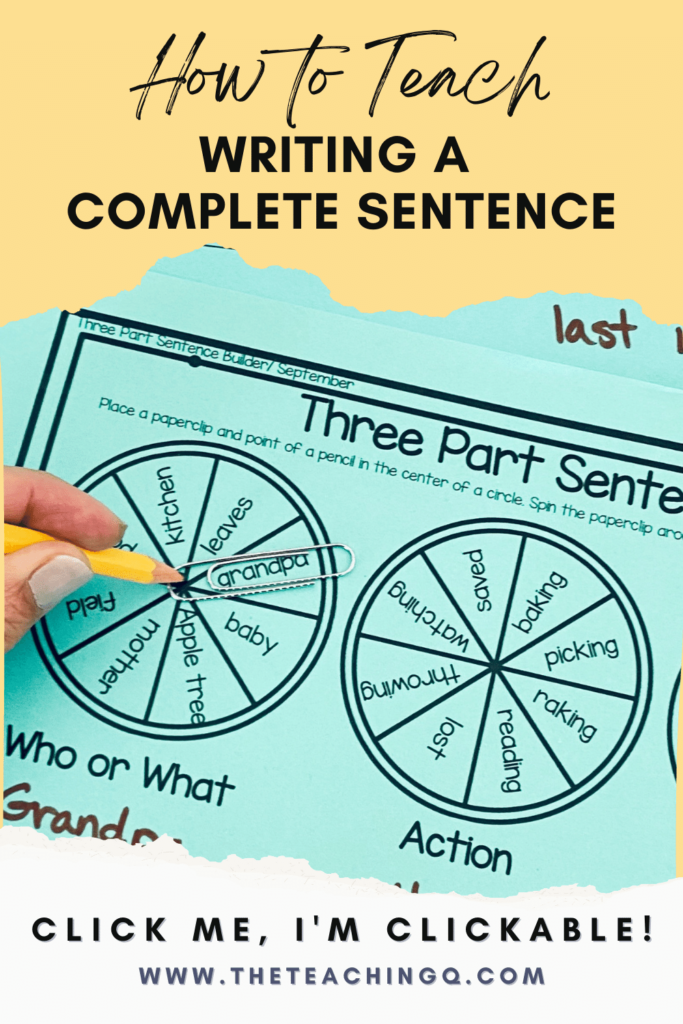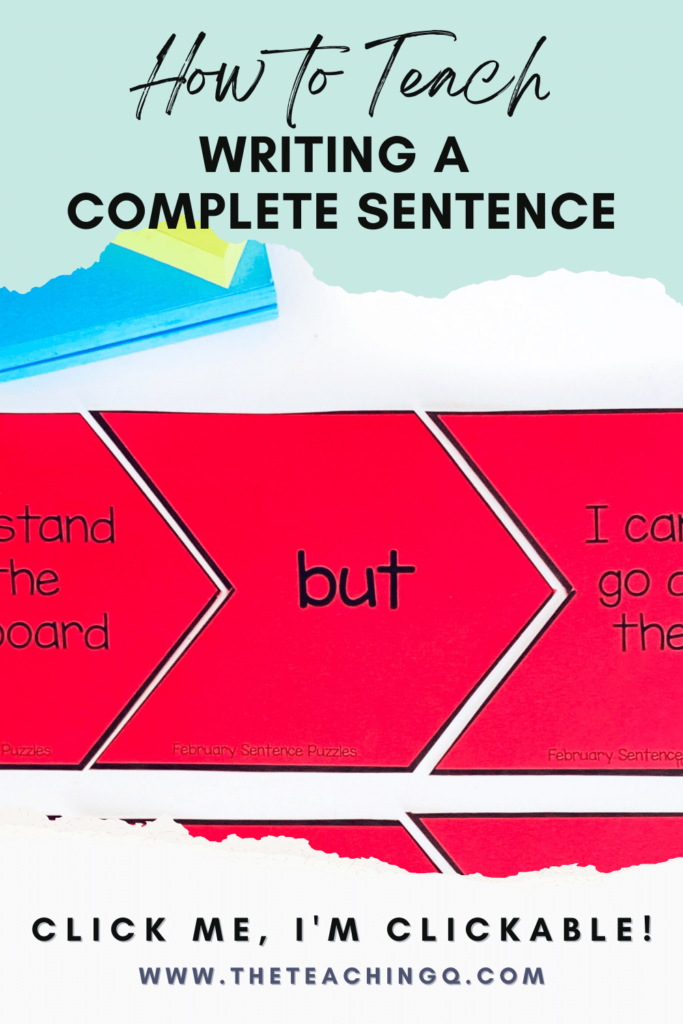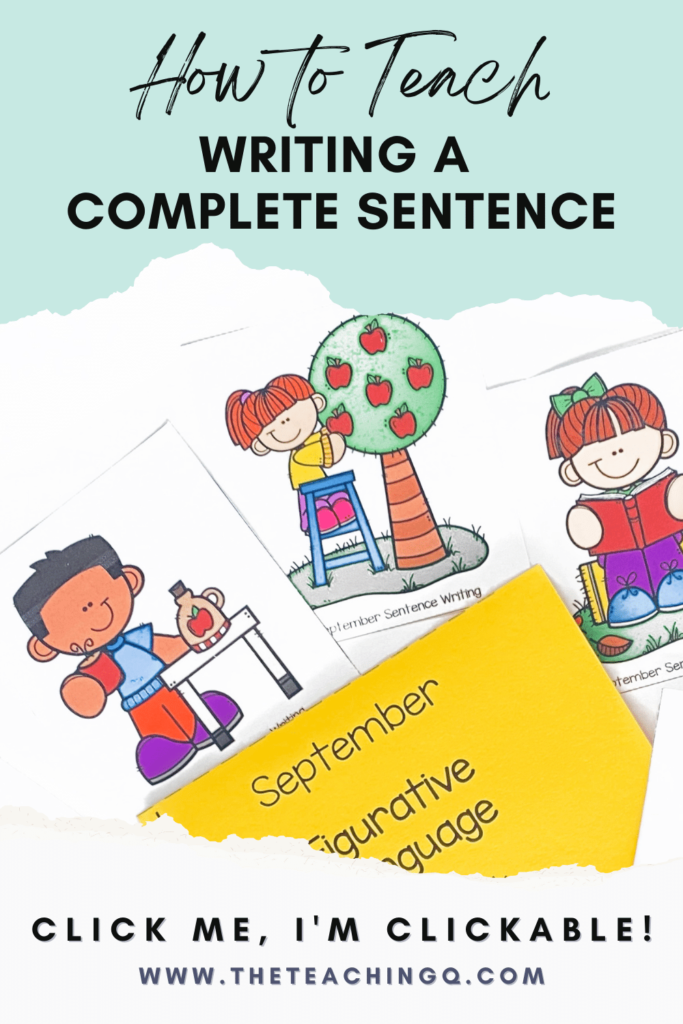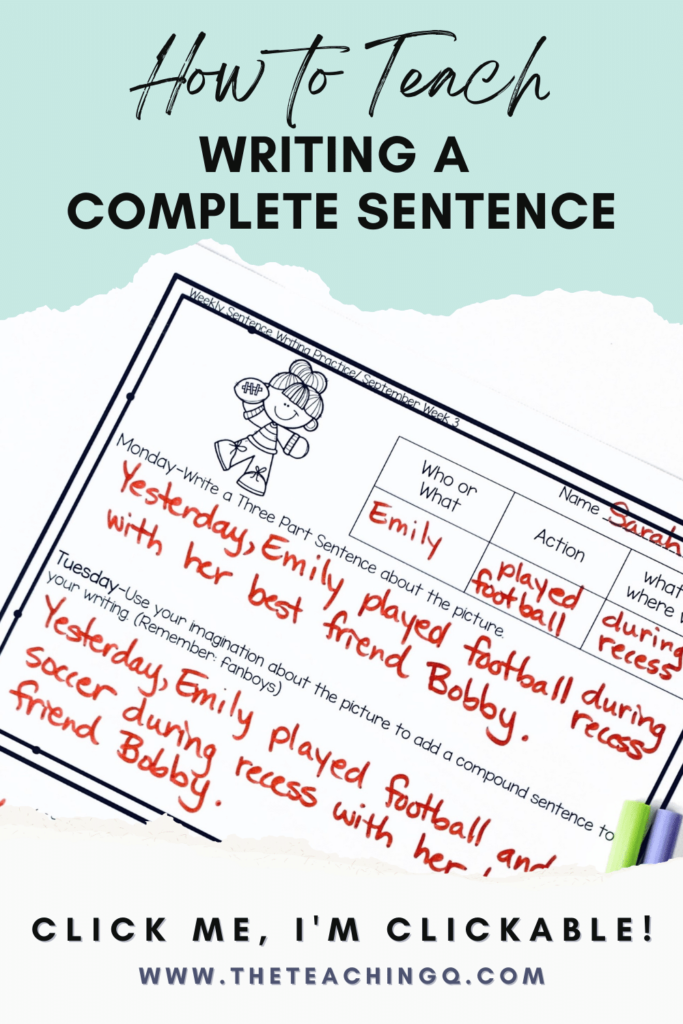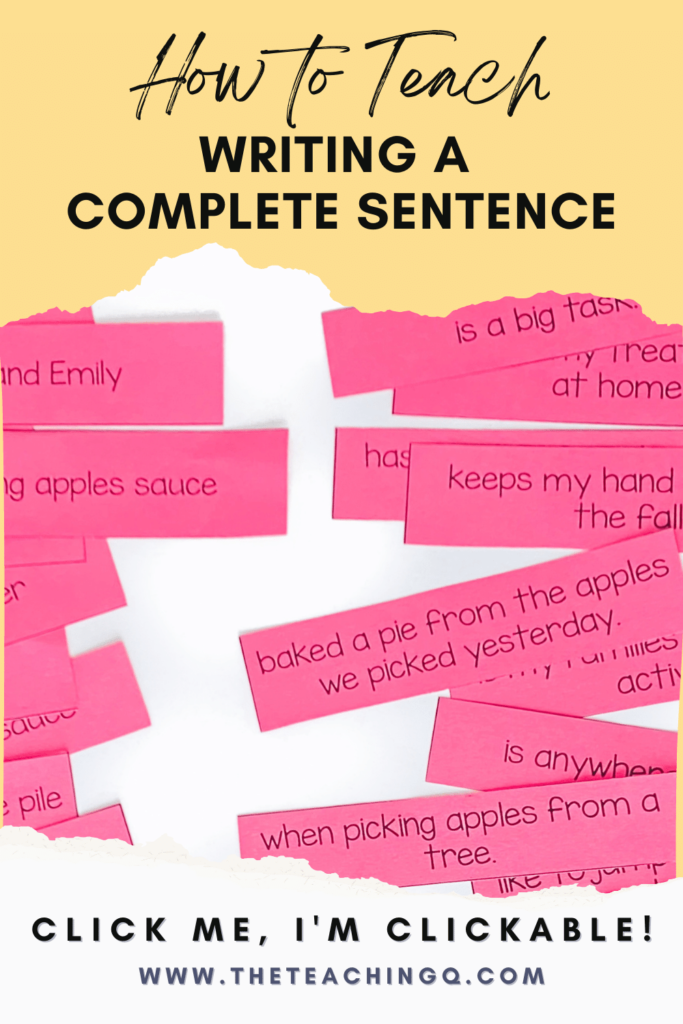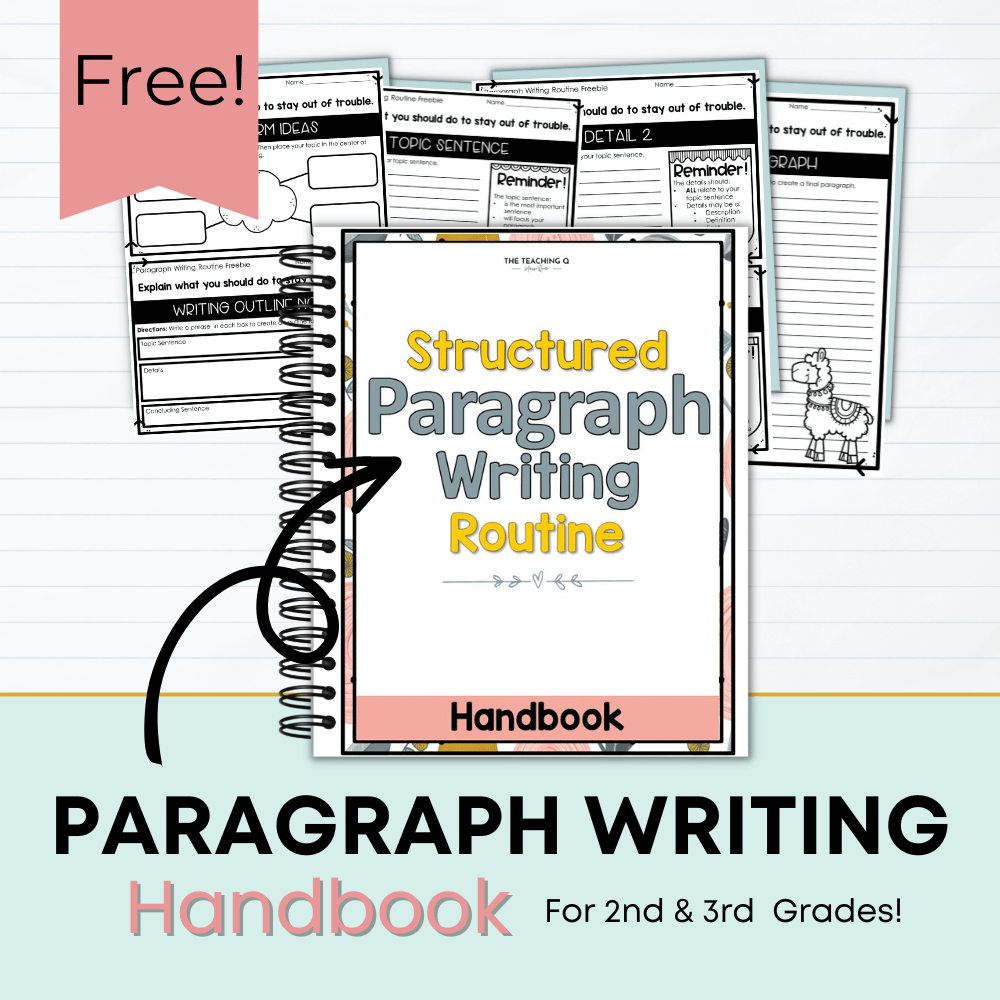Do your students know the difference between a fragment and a complete sentence? If not, don’t worry! Teaching the skill of writing a complete sentence to elementary students is easier than you think.
In this blog post, I’ll give you a rundown of what a sentence is, how to write one, and some tips for writing a complete sentence. By the time you’re finished reading, your students will write complete sentences like the pros!
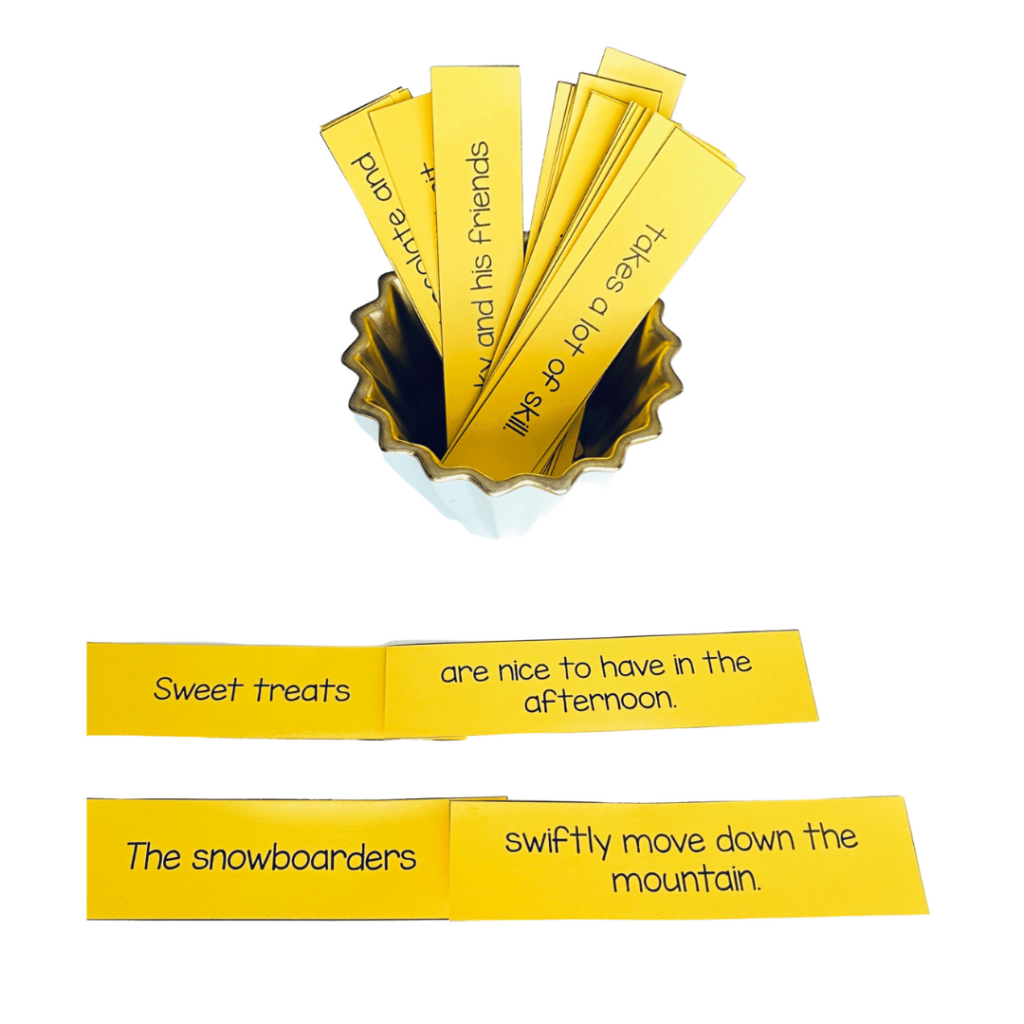
What is a Sentence?
A sentence is a group of words that expresses a complete thought. A sentence must have two things: a subject and a predicate. The subject is the noun or pronoun that represents the person or a thing doing the action. The predicate is the verb or verb phrase that shows the action that is taking place.
For example, The boy kicks the ball.
In this sentence, “the boy” is the subject, and “kicks the ball” is the predicate.
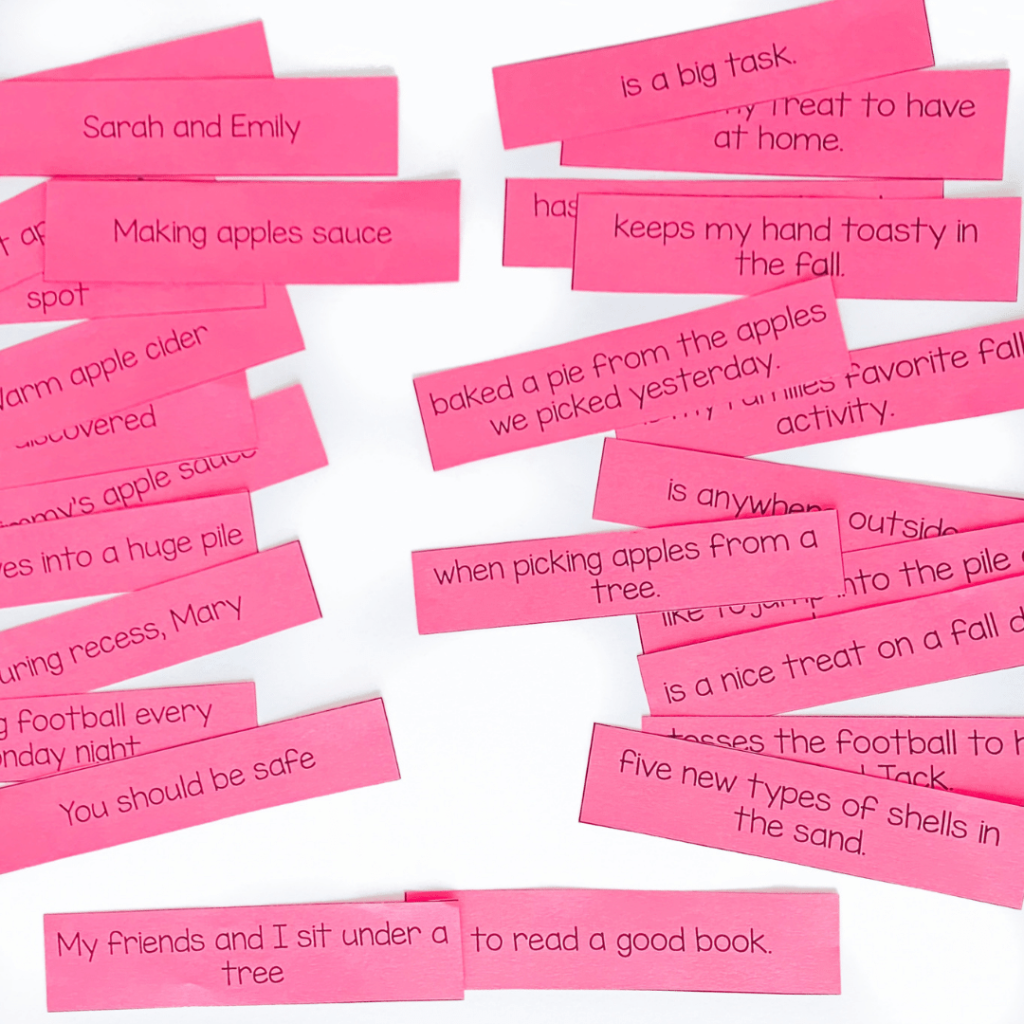
Writing a Complete Sentence vs. a Fragment
A lot of times, students will write fragments instead of complete sentences without even realizing it. As a simple reminder, a fragment is incomplete because it is missing either a subject or a predicate.
For example: Kicking the ball.
This fragment is missing a subject, so it isn’t a complete thought. As a result, it isn’t considered a sentence.
Another type of fragment occurs when students leave out the necessary information in the middle of a sentence. This type of fragment is called an ellipsis.
For example, The boy kicks…harder than anyone else on the team.
In this sentence, there’s information missing between “kicks” and “harder.” As a result, it isn’t considered a complete thought either.
The images above demonstrate how I use a Subject-Predicate Partner Activity to teach students how to write a complete sentence. For this activity, each student in the class draws a small slip of paper from a jar or some container. Once students have had a chance to read their paper or fragment of a sentence, they walk around the classroom looking for someone whose fragment will complete theirs to form a complete sentence.
Although this activity is low prep and very simple, students love it! Plus, it totally drives home the important lesson of why we need to write in complete sentences.
3 Student Activities for Writing a Complete Sentence
Now that we know what makes up a complete sentence, let’s talk about different types of sentences that students can use in their writing!
Here are three types of sentences that are commonly taught to elementary students.
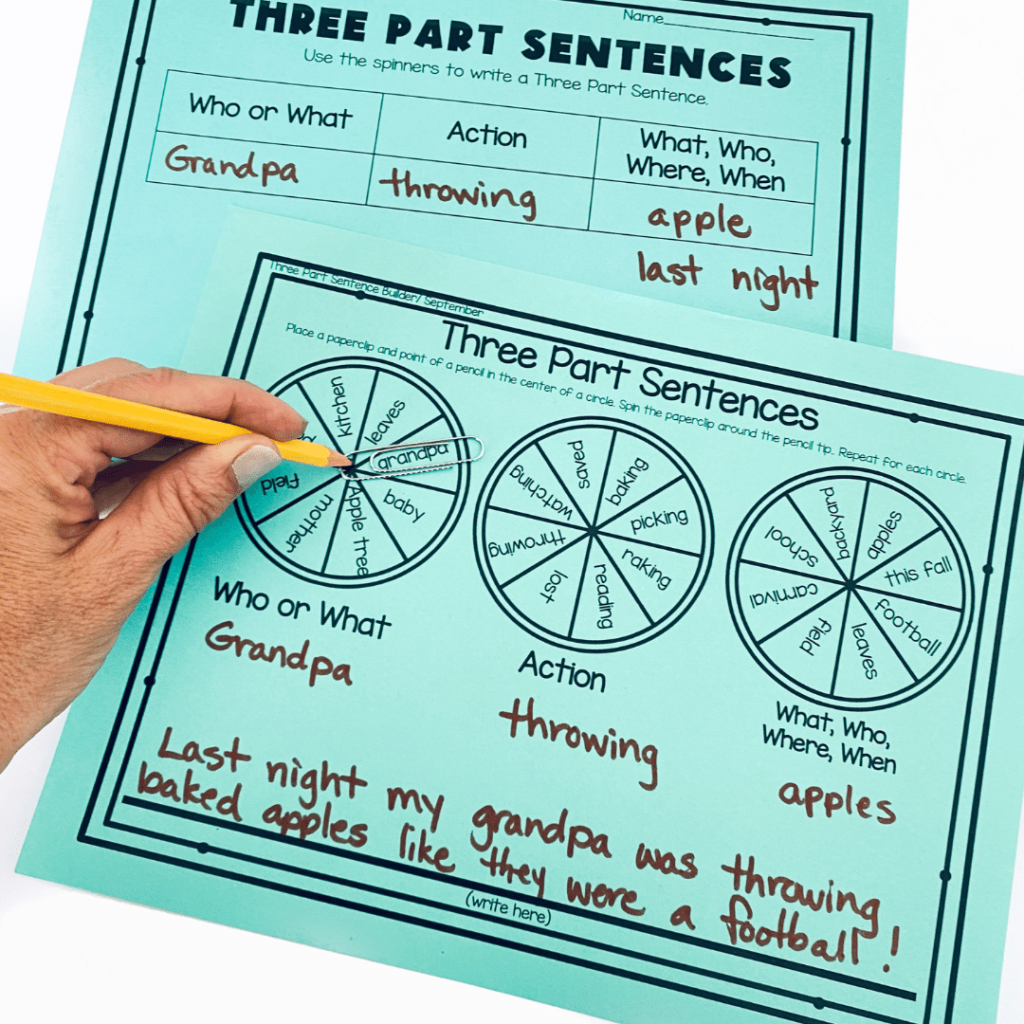
The Three-Part Sentence
This type of sentence has three parts: who or what, plus an action (when).
For example, Mary reads at night before she goes to bed. In this sentence, Mary is doing the action (reading), and she does it at night before she goes to bed.
Two-part sentences (who or what plus an action) and one-part sentences (action only) are also considered complete sentences! Just remember to add those extra details to make your writing more interesting for your reader.
The image above shows how a small paper clip and pencil create an instant spinner. The three spins provide the words the student will need to use to form a complete sentence. You can find this activity and the others mentioned in this post in my Writing Complete Sentences Activities on Teachers Pay Teachers.
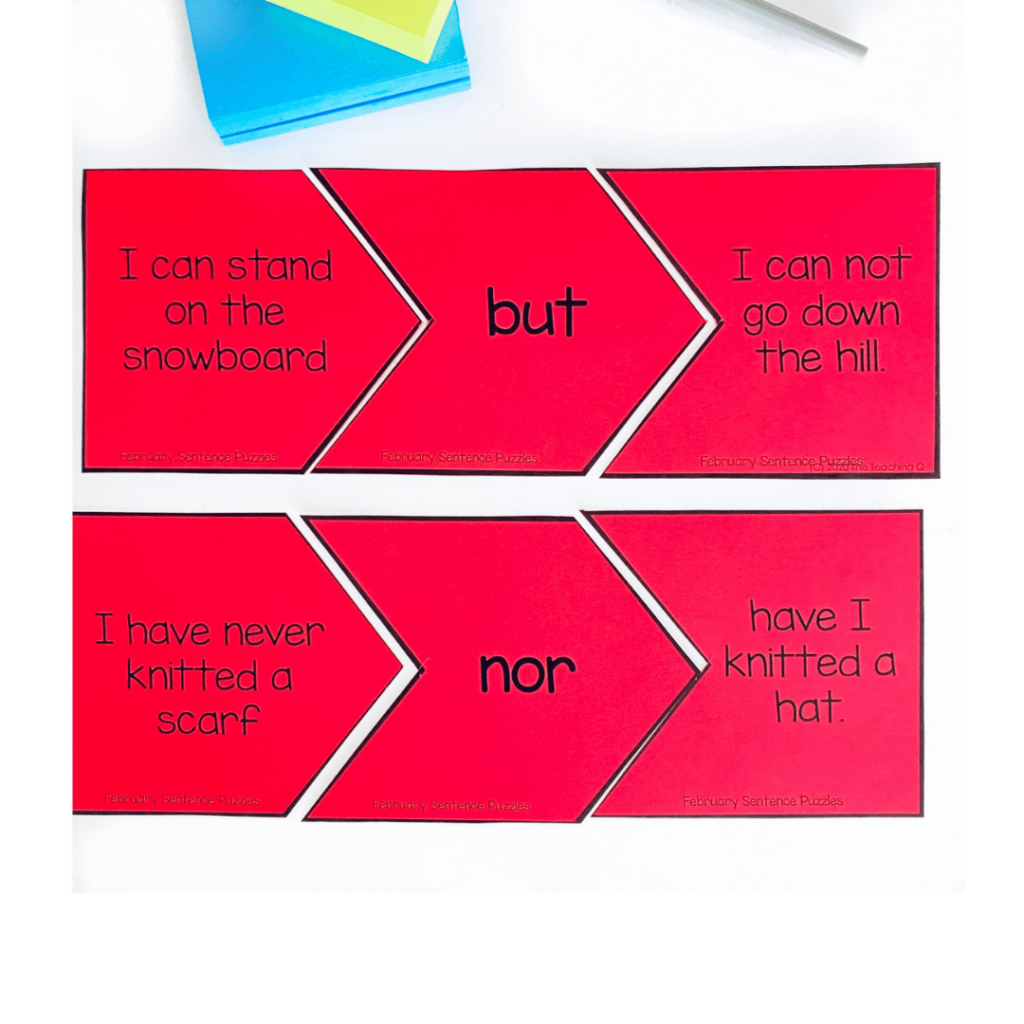
The Compound Sentence
This type of sentence occurs when two independent clauses (complete thoughts) are joined together by a comma and coordinating conjunction (for, and, nor, but, or, yet).
For example, I read books about wizards, and my favorite book series is Harry Potter. Both halves of this sentence could stand alone, but the coordinating conjunction connects them “and.”
The Compound Sentence Puzzle above shows how “fanboy,” the articles of speech listed above, can be used to help students create better sentences. In case you’re not familiar with “fanboy,” it’s an acronym used for each of the words: for, and, nor, but, or, and yet.
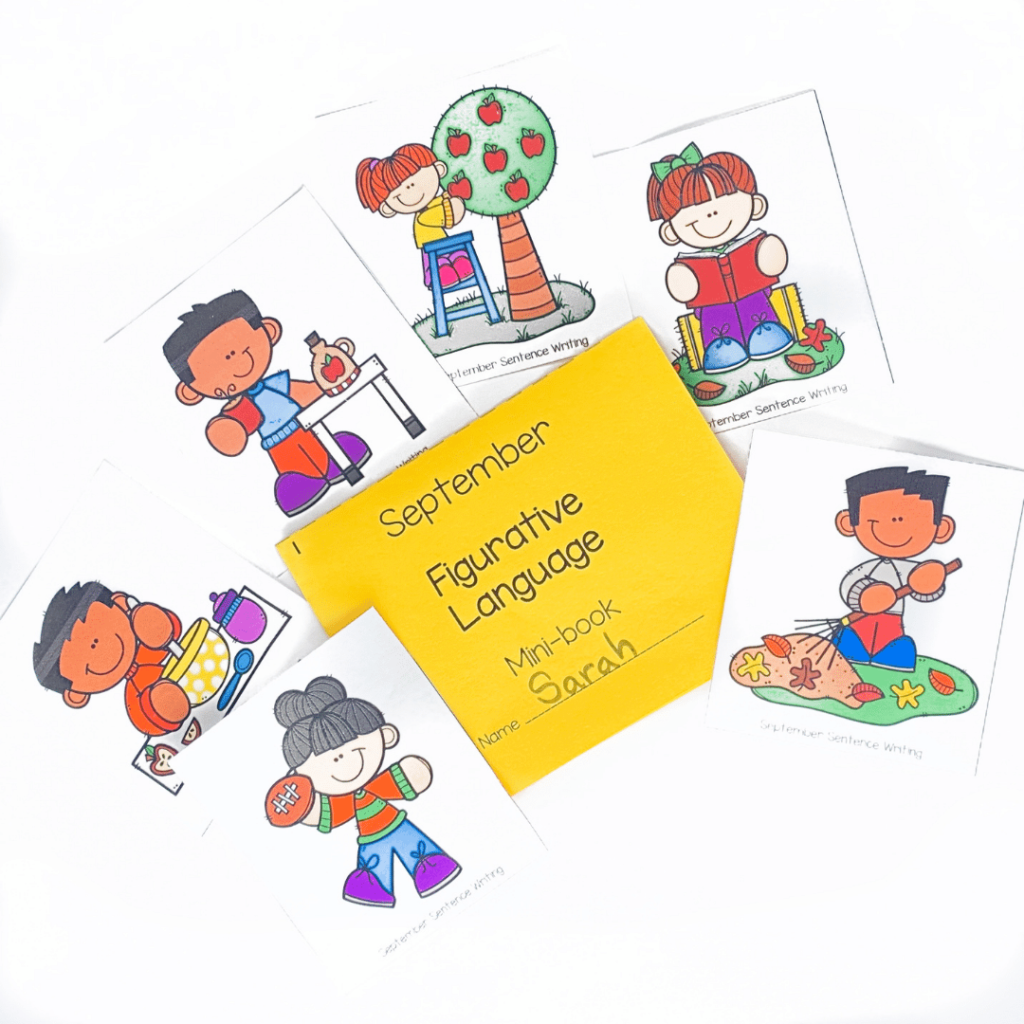
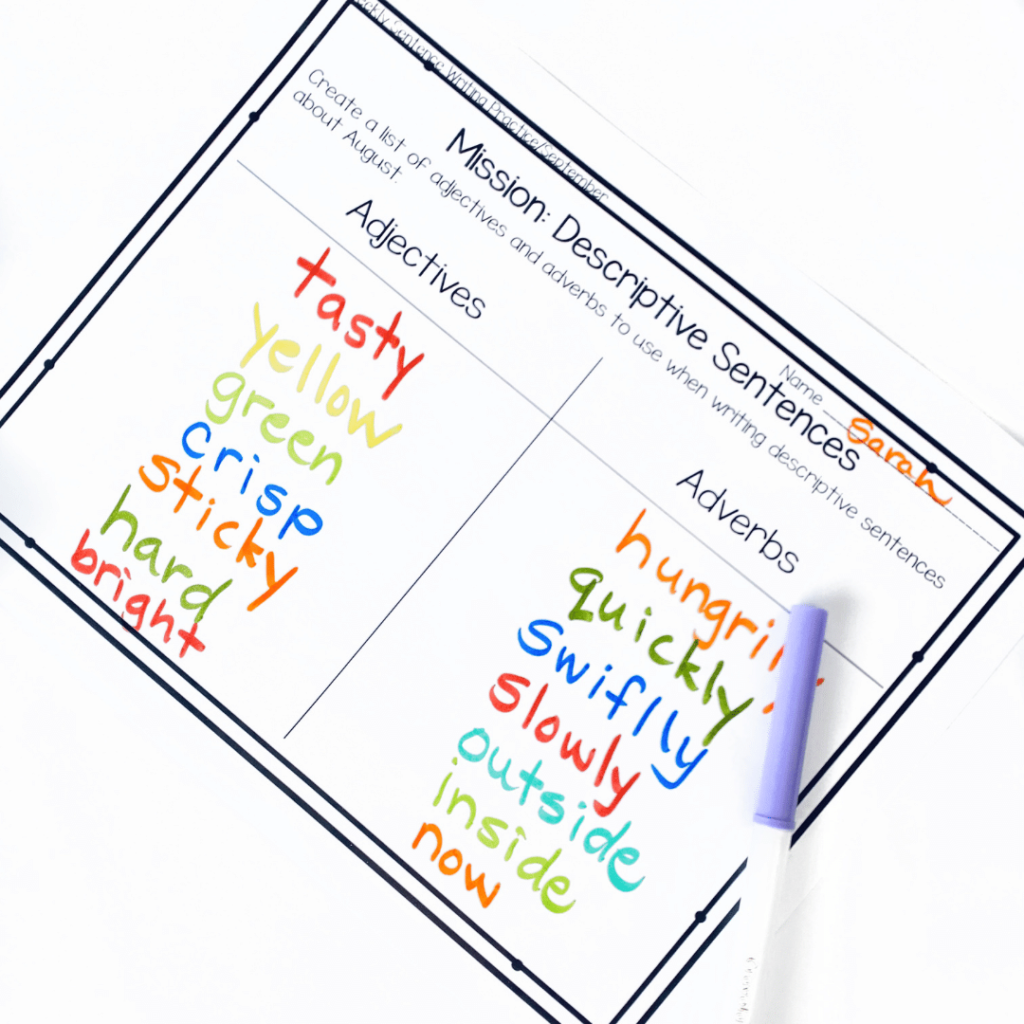
The Descriptive Sentence
As you can probably guess from its name, this type of sentence describes someone or something by using adjectives and other descriptive words. Descriptive sentences usually contain lots of detail so that readers can visualize what’s being described.
For example, The large oak tree in my front yard has leaves that turn red in autumn and provide homemade shade during hot summer days. In this sentence, many adjectives describe the tree (large oak tree) and what it does (leaves turn red in autumn and provide homemade shade).
A good anchor chart created with the help of the class is ideal for supporting students in using more adjectives and adverbs in their writing. See the sample anchor chart above.
Once we have the class-generated word list, students can add details and figurative language to their sentences. A class favorite activity is the Figurative Language Mini-Books that I’ve created for each month.
And yes, it’s in the Monthly Writing Complete Sentences Activities.
Each page of the mini-book requires students to use a different type of figurative language. Such as a simile or metaphor, and even onomatopoeia! Students never tire of this activity since it’s a new challenge to use different images for inspiration each month.
Let’s Practice Writing a Complete Sentence
One way to help students practice writing sentences is to have them write one or two sentences daily as part of a daily writing center activity, morning work, or early finisher’s work.
The practice pages will give them plenty of opportunities to try different sentence constructions and experiment with different words and phrases. As students become more confident and proficient writers, they’ll be able to easily tackle more complex sentence structures.
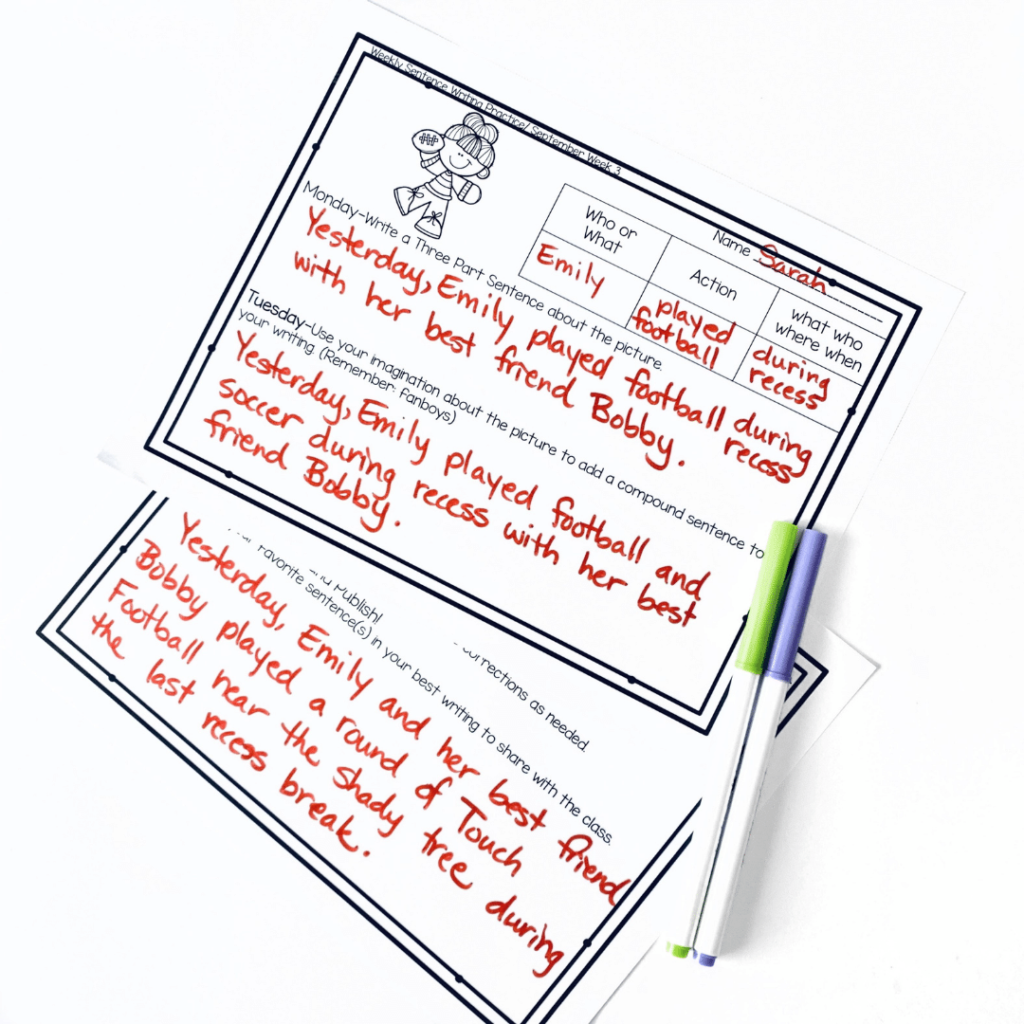
Weekly Sentence Writing Practice
To help support students in their sentence writing growth, I provide a scaffold daily writing practice activity for students. Each of the five sentence writing practice activities is worked on throughout the week.
- Monday, students write a three-part sentence matching a picture.
- Tuesday, the students write a compound sentence for the picture.
- Wednesday, the students “spice up” the sentence by adding descriptive language to the sentence.
- Thursday, students pair share their completed writing with a buddy and provide feedback to one another.
- Finally, on Friday, students revise and edit the sentence.
When teaching sentence writing skills to children, remember to start small with a simple subject and predicate and then move on to more complex structures like compound sentences.
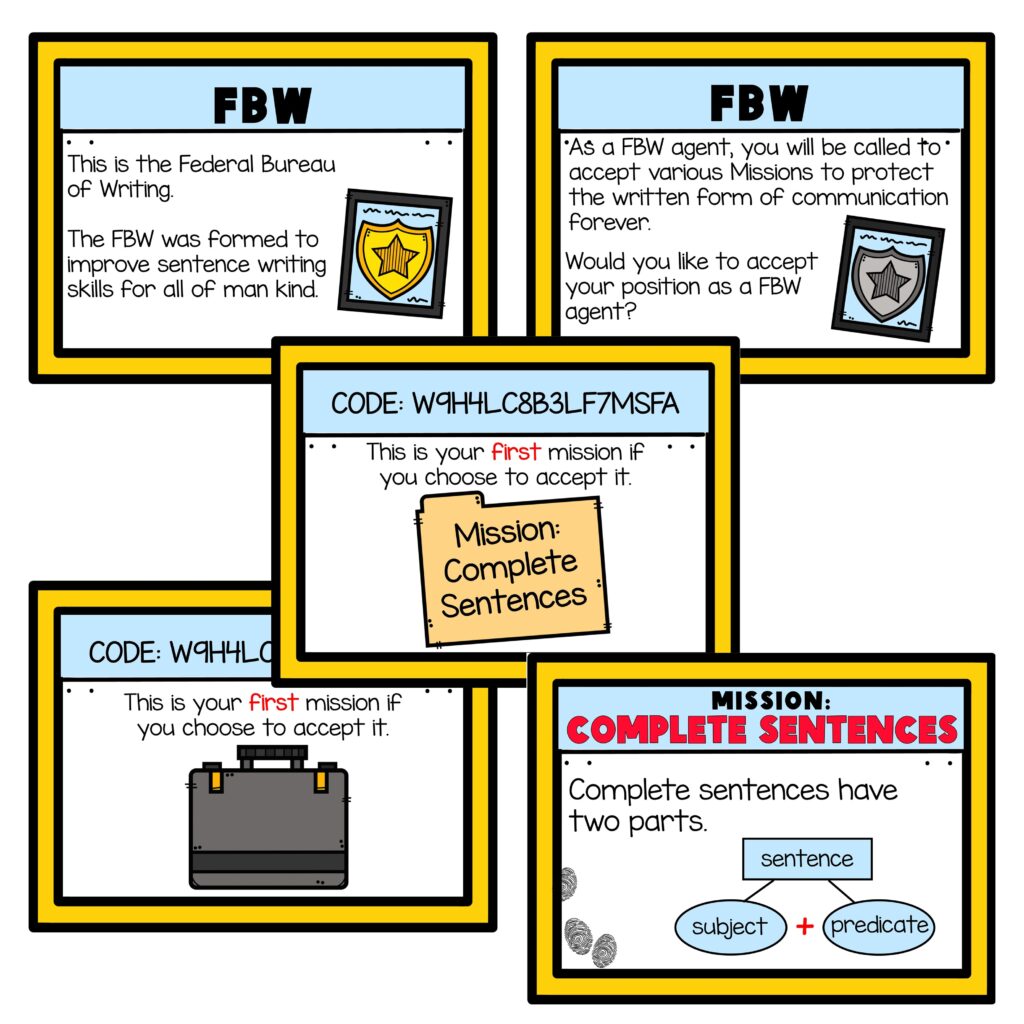
Click here for the Monthly Sentence Writing Activities, you can take a closer look here. But before you click the link, let me share with you why I absolutely LOVE this resource.
Join the Federal Bureau of Writing (FBW)
The Sentence Writing Unit is completed in an FBI style, with students completing various missions. Except, it’s the FBW, Federal Bureau of Writing, that invites students to complete the Sentence Writing Mission. Each mission, and writing task, teach sentence writing skill and includes an activity. By the end of all five missions, students receive a certificate for completing the missions.
Students love acceptance into the FBW!
And if you prefer the digital version instead, you can locate them here.
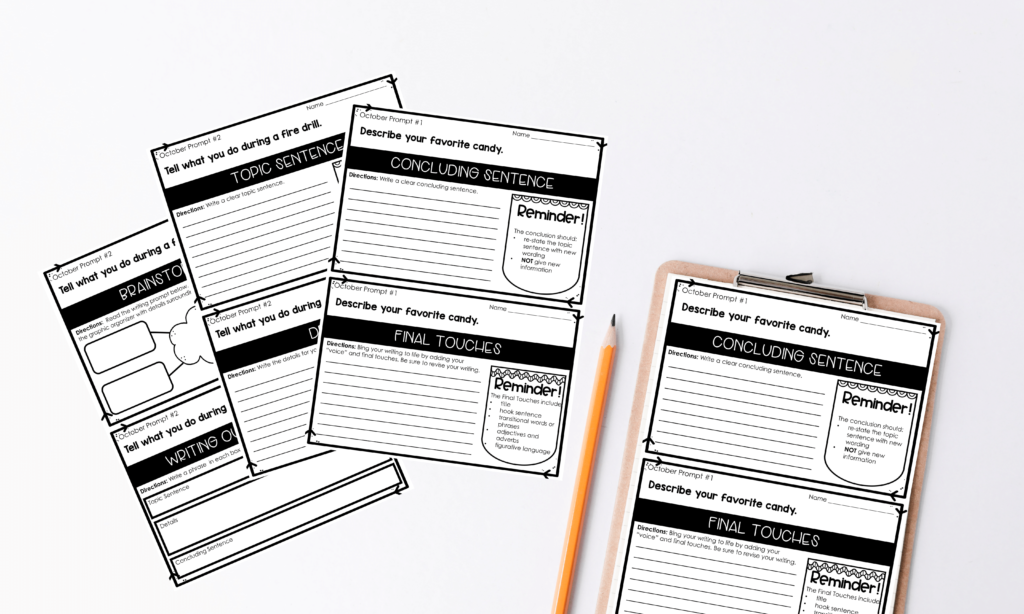
Eventually, your students will move on to mastering paragraph writing skills, which is absolutely amazing!
But as always, students need continued practice in the skill. Fortunately for you, I have a FREE Paragraph Writing Handbook AND one full week of Structured Paragraph Writing Practice!
Simply fill out this short form here, and I’ll be sure to send the FREEBIES your way ASAP.
If you’re looking for more resources on how to teach elementary students how to write a complete sentence, check out my blog post on sentence writing activities for student success.
Now that you know how to teach writing a complete sentence to elementary students, put these tips into practice with your class!

Are your students struggling and making very little progress in writing? Or maybe they’re unmotivated or a reluctant writer? If so, I’ve got your back.
Yes…I…Do!
Let me share my secret sauce when it comes to teaching writing to elementary students.
It’s the Sentences, Paragraphs, and Essays: OH, MY! E-book.
Click this link to learn more about how the E-Book can transform your students’ chicken scratch, hap-hazard writing into strong, effective, glorious writing!
Until next time, happy teaching!
–Melissa


